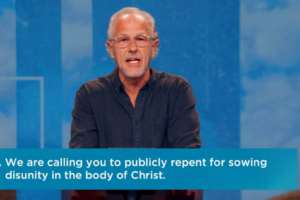Pornography is not new, but the digital age has made it more ubiquitous and accessible than ever before. The technological realities of smartphones and high-speed internet have fundamentally changed the landscape of pornography and ushered it into the cultural mainstream where it enjoys increasingly widespread acceptance.
In Barna’s landmark study, The Porn Phenomenon (now available to purchase online), commissioned by Josh McDowell Ministry, we interviewed thousands of American teens, young adults and older adults about their views on and use of pornography. Here are ten of the most compelling findings:
1. There is moral ambiguity toward porn, particularly among younger Americans.
Perhaps the most sobering finding from the study is the reality of how accepted viewing porn has become in our culture today, particularly among teens and young adults. Around half of adults 25 and older say viewing porn is wrong (54 percent), and among teens and young adults 13-24, only a third say viewing porn is wrong (32 percent). This posture toward porn among younger Americans is confirmed by how they talk about porn with their friends: The vast majority reports that conversations with their friends about porn are neutral, accepting or even encouraging. They generally assume most people look at porn at least on occasion, and the morality of porn is rarely discussed or even considered. Just 1 in 10 teens and 1 in 20 young adults report talking with their friends about porn in a disapproving way.
2. There are varied opinions about what constitutes porn.
“I know it when I see it,” said Supreme Court Justice Potter Stewart famously when he was asked to define pornography. His statement demonstrates a perennial problem: It is notoriously difficult to define pornography. What counts as sexually explicit material is both highly subjective and highly contested, and this was true of Barna’s study. When teens, young adults, and adults are asked an open-ended question about what makes something “cross the line” into porn, the responses are varied, and cover both form (content) and function (intention for use). The top four indicators are all within a 2 percent range, with the most popular being something sexually explicit (17 percent). Just as common is when something displays a sexual act (16 percent) or sexual intercourse (16 percent), followed closely by whether something intends to arouse the viewer (15 percent) or contains full nudity (11 percent).
3. 1 in 3 Americans seek out porn at least once a month.
Measuring porn usage can be difficult, because living in a hypersexualized and pornified media culture means catching sight of explicit images with little or no effort. People often come across images they never intended to see through multiple inputs. That’s why it was important to distinguish between those who “view” porn, and those who “seek it out.” In other words, intention matters a lot. When we look at it this way, focusing exclusively on intentional viewing, we find that between 6 and 12 percent of people aged 13 and older view porn daily; 14 to 21 percent view porn weekly; 13 to 19 percent view it once or twice a month; and 18 to 32 percent view it less often. Half (49%) say they never seek out porn, and 17 percent say they have never come across it.
4. Age, gender and faith practice are the three biggest factors in frequent porn use.
When looking closely at frequent porn users (those who seek out porn daily, weekly and monthly), we begin to see patterns emerge according to age, gender and faith practice. To begin with, men use porn more frequently than women by a wide margin. Twice as many male teens and young adults use porn than female teens and young adults (67 percent compared to 33 percent), and four times as many male adults 25 and older use porn than female adults (47 percent compared to 12 percent). Practicing Christians are more than three times less likely to use porn than other teens and adults (13 percent compared to 42 percent), and young adults (57 percent) are much more likely than both teens (37 percent) or adults 25 and older (29 percent) to be a frequent porn user.
5. Young adults use more porn—and are less likely to say it’s bad for society.
Among each of the generational groups, young adults 18-24 are the most frequent porn users. Almost 6 in 10 young adults (57 percent) seek out porn either daily, weekly or monthly. This is compared to a little over one-third of teens (37 percent), and almost 3 in 10 adults 25 and older (29 percent). They are also the least likely to say that porn is very bad for society (14 percent). The next closest are Gen-Xers at 24 percent, but the largest gap is a 23 percent differential between young adults and Boomers (37 percent compared to 14 percent). Like teens (16 percent), young adults (17 percent) are also the least likely to say porn is “somewhat bad” for society.
6. Teens and young adults rank not recycling as more immoral than viewing porn.
When asked to rank a series of action statements (lying, over-eating, stealing and so on) according to a five-point scale: “always OK,” “usually OK,” “neither wrong nor OK,” “usually wrong ” and “always wrong,” teens and young adults rank “not recycling” as more immoral than viewing pornographic images. Combining the percentages of those who chose always and usually wrong for each statement, theft (taking something that belongs to someone else) ranked No. 1 at almost nine in 10 (88 percent). Not recycling ranked No. 4 at 56 percent, and porn was all the way down at No. 9 with only a third (32 percent) of teens and young adults ranking it as morally wrong.
7. Most porn users say it doesn’t bother them to use porn.
When asked their feelings about porn use, a majority of adults (54 percent) say it doesn’t really bother them. Interestingly, Gen-Xers and Boomers (both 54 percent) are the most unbothered by their porn usage. Young adults (51 percent) and teens (50 percent) follow closely, with elders appearing the most uncomfortable with their use (47 percent).
8. Very few adults feel a sense of guilt when they use porn.
Sociopaths aside, human beings tend to feel a sense of guilt when they do something they believe is wrong. When asked about how comfortable they feel about their porn use, only about 1 in five adults overall (18 percent) report feeling much guilt. Generationally, teens are the most likely age segment to experience feelings of guilt (38 percent), along with young adults (21 percent). These are followed by Elders (17 percent), Boomers (15 percent) and Gen-Xers (14 percent). Interestingly, minorities (24 percent non-white compared to 11 percent white), practicing Christians (29 percent compared with 12 percent of non-practicing Christians) and conservatives (25 percent compared to 13 percent of liberals) are significantly more likely to experience a sense of guilt compared to others.
9. Most porn users are OK with how much porn they use—but practicing Christians are divided.
Predictably, practicing Christians who seek out porn at least on occasion are much less comfortable than the general population with their porn use. About 2 in 5 say they are comfortable (39 percent), compared to nearly 7 in 10 among all teens and adults (68 percent). They are also about twice as likely to say they’d like to stop (40 percent) than to say they’d like to use less (21 percent). Among the general population of teens and adults, 14 percent say they want to use porn less, and 18 percent would rather not use it at all.
10. Few adults are actively trying to stop using porn.
There are a number of effective approaches to combating porn use (accountability groups, counseling, filtering software and more), but very few adults have either tried to break their habit in the past, or are actively fighting to break their habit now. When the general population are asked whether they have tried to stop using porn but have been unable to (or started again), only 9 percent say so. The rate is almost double among practicing Christians (16 percent), but still remains fairly low overall. When asked whether they are currently trying to stop using porn, 9 percent of the general population agree, while a much larger 19 percent of practicing Christians say they are currently working to kick their habit.
This article originally appeared on barna.org.
See an error in this article?
To contact us or to submit an article





















